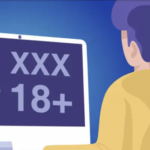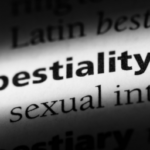Producing Pornography in Australia – What Does The Law Say?

Whether you want to start an OnlyFans or create your own boutique production company, making smutty films involves navigating a variety of complex laws in Australia.
Here’s a rundown of the rules.
Is making pornography legal in Australia?
The legal status of pornography in Australia is much more complex that you might think, involving interactions between classification regulation, online content schemes and laws regulating sex work in each State or Territory.
Below is a quick guide to some of this complexity.
Classification of pornography in Australia
Media which is to be sold, exhibited or distributed in Australia must first be classified by the Australian Classification Board.
Classification markers include “G, PG, M, MA 15+, R 18+ or X 18+” for films and games, and “Unrestricted, Category 1 (restricted) or Category 2 (restricted)” for publications.
If a film, game or publication does not fit this classification criteria, it is ‘Refused Classification’ (RC). It is illegal to sell, exhibit or distribute a film, game or publication that is RC (or would likely be RC).
Any sexually explicit media that is prohibited under the criminal law will automatically be RC including child abuse material and other abuse-based imagery.
For pornography, depicting consenting adults, to be classified in Australia it would need to receive either an X 18+ classification (for films) or be considered a Category 2 (restricted) publication.
However, current guidelines severely limit the kinds of pornography that could be classified under this scheme.
Under the current Publication Guidelines a publication will be RC (and therefore illegal throughout Australia) if it depicts:
‘revolting or abhorrent phenomena in such a way that they offend against the standards of morality, decency and propriety generally accepted by reasonable adults’.
‘Revolting or abhorrent phenomena’ under the guidelines includes ‘fetishes or practices, sometimes accompanied by sexual activity, which are considered offensive’. Furthermore, ‘fetish’ is defined under the Publication Guidelines as:
‘[A]n object, an action, or a non-sexual part of the body which gives sexual gratification. Mild fetishes include stylised domination and rubberwear. Stronger fetishes include bondage and discipline.’
Under the current Film Guidelines, a pornographic film will be RC if it depicts:
- Violence, even if violence is unrelated to the sex occurring in the film. Infamously, the Pirates of the Caribbean porn parody Pirates (2005) was initially prohibited in Australia because of its non-sexual fight scenes.
- Fetishes, which are much broadly defined under the film guidelines to include “body piercing, application of substances such as candle wax, ‘golden showers’, bondage, spanking or fisting”.
- People over the age of 18 portraying minors, including scenarios involving school uniforms or other indicators of youth.
- Incest fantasies or other fantasies which are offensive or abhorrent.
As can be seen, many forms of pornography depicting consenting adults would not meet the criteria to be classified either Category 2 (restricted) or X 18+ in Australia and would be prohibited from sale throughout the country.
Does making pornography fit within Australian sex work laws?
The legal status of sex work varies throughout Australia, ranging from areas of significant criminalisation to full decriminalisation of sex work.
There is currently an open question whether the production of pornography could constitute operating a ‘brothel’ or would require compliance with the sex work laws in each State or Territory.
For example, sex work has been largely decriminalised in NSW, but a number of restrictions still remain.
It is an offence under section 15 of the Summary Offences Act (NSW) to live wholly or in part on the earnings of “prostitution”, unless the earnings are derived from working, managing or owning a brothel. This offence carries a maximum penalty of 12 month’s imprisonment.
Prostitution is defined broadly under the Act as including: “acts of prostitution between persons of different sexes or the same sex and includes (a) sexual intercourse … and (b) masturbation committed by one person on another, for payment”.
Under a plain language interpretation, if a person is hiring performers to have sex on film and the producer is earning money from selling that film, this could constitute an offence under the Act unless the premises is recognised as a brothel.
Can you upload pornography onto the internet in Australia?
The Online Safety Act 2021 (Cth) regulates online content in Australia. The Act empowers a regulator called the eSafety Commissioner to take down online content deemed harmful or unsafe for Australians.
Under the Act, potentially harmful material is subcategorised into “Class 1 material” and “Class 2 material”.
Class 1 material includes all RC media under the current classification guidelines. This material is prohibited and should not be accessible to Australians online.
Class 2 material includes all media which would likely be classified as X 18+ under the current classification guidelines. This material can be accessible to Australians online, but must be behind a “restricted access system”
Currently, a restricted access system for Class 2 material requires some proactive steps to prevent access to the material by minors. However, a more comprehensive age verification process is currently in development.
The eSafety Commissioner has extensive powers to remove and block Class 1 material or unrestricted Class 2 from being accessed by Australians, with significant civil penalties applying to social media sites, web hosts and internet service providers for failing to comply.
Uploading pornography online must follow the regulations regarding online content in Australia and producers must ensure all X 18+ content is behind a restricted access system, and RC material is not accessible.
Offences for making an indecent or objectionable film
Most States and Territory have retained outdated laws regarding the production and sale of ‘indecent’ or ‘objectionable’ films or articles, although they are rarely enforced. This has generally been construed as encompassing all pornography, including that depicting consenting adults.
In NSW, section 578C of the Crimes Act 1900 (NSW) outlines an offence for “publishing indecent articles” which includes a generating a “record” such as a film. This carries a maximum penalty of a fine of $11,000 and/or 12 months imprisonment for an individual, or a fine of $27,500 for a corporation.
An act is “indecent” if right minded persons would consider it to be contrary to community standards of decency. A similarly worded offence exists in Victoria for “making an objectionable film” – this offence was used in 2009 to prosecute porn producer Garion Hall in Victoria over films made for his website Abbywinters.com.
Offences for possessing, exhibiting or selling prohibited pornography in Australia
Certain types of prohibited pornography, such as child abuse material or bestiality pornography, are encompassed by serious criminal offences in every State and Territory in Australia.
Child abuse material
At a Federal level, the Criminal Code Act 1995 (Cth), which applies throughout Australia, contains several offences prohibiting the production, distribution and accessing of material that sexualises children.
Under section 474.23 of the Code, it is a criminal offence to possess, control, produce, supply or obtain child abuse material either for personal use or use by another. This carries a maximum penalty of 15 years imprisonment.
At a State level, section 91H of the Crimes Act 1900 (NSW) makes it an offence to produce, disseminate or possess child abuse material. This carries a maximum penalty of 10 years imprisonment.
There are defences and exceptions to both Commonwealth and New South Wales offences where the material is for artistic, journalistic or medical purposes or otherwise for a public benefit. However, the production of material for the sexual gratification of oneself or others is clearly criminalised throughout Australia.
It’s important to note that child abuse material can involve performers who are over the age of 18 years old if they are depicted or portrayed as being under the age of 18. Laws also apply to fictional ‘children’ including sex dolls, cartoons and AI generated images.
Bestiality or animal crush pornography
Another category of pornography that carries serious criminal consequences, is any material involving animal cruelty or sexual activity between humans and other animals.
Every State and Territory has laws prohibiting the possession, production or dissemination of bestiality and animal crush material.
In NSW, section 547E of the Crimes Act 1900 (NSW) makes it an offence to possess, produce or disseminate bestiality or animal crush material.
“Bestiality or animal crush material” is defined as material that:
- Depicts or describes bestiality or an animal being crushed, burned, drowned, suffocated, impaled or otherwise killed or subjected to serious injury; and
- Is material that a reasonable person would regard in all the circumstances as being intended or apparently intended to excite or gratify a sexual interest or excite or gratify a sadistic or other perverted interest in violence or cruelty.
“Animal” under the Act is limited to a mammal, a bird or a reptile and does not include insects, spiders or worms.
Section 547E(1) of the Act states that a person who produces or disseminates bestiality or animal crush material commits an offence which carries a maximum penalty of 5 years imprisonment.
Section 547E(2) of the Act also outlines an offence for the possession of bestiality or animal crush material, which carries a maximum penalty of 3 years imprisonment. Possession includes accessing material online.
Otherwise prohibited pornography
With the exception of the ACT, more minor offences exist in every State and Territory in relation to the possession, exhibition or sale of pornography that would be classified as X18+ or Refused Classification. This includes material depicting consenting adults.
In NSW, the Classification (Publications, Films and Computer Games) Enforcement Act 1995 (NSW) contains several offences relating to the sale or exhibition of prohibited publications or films, including:
- Section 6 of the Act: sale or public exhibition of unclassified, RC or X 18+ films, which carries a maximum penalty of a fine of $11,000 and/or 12 months’ imprisonment for an individual, or a fine of $27,500 for a corporation.
- Section 16 of the Act: keeping or possession of an unclassified, RC or X 18+ film in premises where classified films are sold, attracts a maximum penalty of a fine of $11,000 for an individual, or $27,500 for a corporation.
- Section 17 of the Act: leaving an RC of X 18+ film in a public place or in a private premises without permission, comes with a maximum penalty of a fine of $11,000 and/or 12 months’ imprisonment for an individual, or a fine of $27,500 for a corporation.
- Section 18 of the Act: possessing or copying of unclassified, RC or X 18+ films with the intention of selling or exhibiting it, has a maximum penalty of an $11,000 fine and/or 12 months’ imprisonment for an individual, or $27,500 for a corporation.
- Section 19 of the Act: selling for RC or unclassified publications, sets down a maximum penalty of $2,200 for an individual ,or $5,500 for a corporation for unclassified Category 1 publications, a fine of $5,500 for an individual or $11,000 for a corporation for unclassified Category 2 publications, and a fine of $11,000 for an individual and/or 12 months’ imprisonment for an individual, or $27,500 for a corporation for RC publications.
In the ACT, a licensing scheme exists for the copying and distribution for X18+ classified material, which is why it has often garnered a reputation as the ‘pornography capital of Australia’.
So is making pornography legal in Australia?
The short answer is technically not . However, if the pornography produced depicts non-violent sex between consenting adults, the potential criminal penalties attaches are, at most, a fine, and these laws are rarely enforced.
Ensuring everything is consensual
Along with ensuring that pornography production doesn’t fall foul of laws regarding content, it’s crucial that porn producers ensure all sexual acts performed in front of the camera are consensual and comply with the criminal law.
At what age can a person participate in pornography?
The ‘age of consent’ refers to the minimum age a person can consent to sexual activity in Australia. In South Australia and Tasmania, the age of consent is 17 years old. In all other jurisdictions it’s 16 years old.
However, the age of consent to sexual activity is not the same as the minimum age a person must be to be legally filmed in a sexual manner. In that case a person must be, at a minimum, 18 years old.
When is sex consensual?
Under Australian criminal law, all sexual activity must be entered into with the full consent of all participants. Sexual activity without consent would amount to the criminal offence of rape or sexual assault in all jurisdictions.
Every State and Territory in Australia has a definition of ‘consent’ outlined in relevant statutes. These definitions include “free agreement” (Vic and Tas), “free and voluntary agreement” (NSW, SA, NT the ACT) or “consent freely and voluntarily given” (Qld and WA).
Consent can be withdrawn at any time, and consenting to one type of sexual activity does not mean consent to future activity.
In some Tasmania, the ACT, Victoria and NSW “affirmative consent” is required for sexual activity to be legal. This means that consent cannot be assumed, and each participant must say or do something to ascertain whether the other party is consenting.
All States and Territories also note a number of circumstances which “vitiate consent” (or render It no longer applicable) including the use of threats, force, intimidation, blackmail or fraud to obtain the consent of another person.
Within the context of pornography production, the following actions would likely vitiate consent:
- Pressuring or threatening performers to do certain acts.
- Saying you will release the images or video taken to third parties unless certain actions are done.
- Promising to pay ‘extra’ for certain acts, without having any intention of doing so.
- Doing any sexual act that was not freely consented to by all parties.
- Failing to stop when it is clear a person no longer consents to a sexual act.
- Surprising a performer with sexual acts they were not aware of.
- Performing sexual acts whilst a person lacks capacity to consent due to disability or intoxication.
Can a person who is intoxicated consent to sex?
In all States and Territories a person may not be able to consent to sex if they are substantially intoxicated by drugs or alcohol.
Merely being intoxicated by alcohol or “high” on drugs does not necessarily mean a person cannot consent to sexual activity. However, a person who is so intoxicated or high that they cannot freely and voluntarily agree to sexual activity cannot consent.
This can include situations where:
- A person is so intoxicated or high, they cannot communicate or withdraw consent due to slurred speech, poor coordination or other impairments.
- A person is so intoxicated or high they cannot understand the nature of the sexual acts being performed or who they are being performed with.
- A person has “passed out” or is otherwise unconscious.
Can a person consent to acts of extreme BDSM?
Even if a person freely and voluntarily agrees to certain sexual acts, they may be so extreme that the law does not allow the consent to be recognised.
This is the case for many acts of BDSM which may result in physical harm or injury to another person. A fully explanation on these limitations in NSW are outlined here, but generally acts of BDSM which result in bruising or breaking of the skin may be illegal, regardless of the consent of participants.
It should also be noted that State and Territory laws regarding non-fatal strangulation, may prohibit certain acts of choking or suffocation, even if all parties consent.
Who owns the pornographic material produced?
It’s not uncommon for porn producers to encounter questions about ownership of the material produced as part of production. This could arise because content is stolen and redistributed on the internet, or where a performer does not want their material to be further shared.
What to do if pornography content is stolen
If content that you have produced has been stolen and shared elsewhere on the internet, you may have legal recourse under copyright law.
Copyright is a bundle of rights which visual artists, musicians, writers and video and film makers own in relation to their work. It exists in every kind of creative work you can imagine.
The most common place performers find their content re-uploaded without their consent are on ‘tube sites’ such as PornHub.
The first step in dealing with copyright infringement is to try to have the video taken down by following the website’s copyright infringement or general removal request mechanisms.
If this not successful, or the website doesn’t have a complaints mechanism, you should issue a takedown notice to the website host. ArtsLaw has instructions on how to do this.
If this is unsuccessful, you may wish to see if the adult website is part of an industry association that has a disciplinary process.
The Australian industry association for adults-only businesses is the Eros Association. The North American equivalent is the Free Speech Coalition. However, these associations will only have recourse if the adult business is a member of their organisation.
Can performers object to their content being shared?
If a performer no longer wants their material shared on a website or owned by a producer, they may have some legal basis for objecting.
At the outset, it’s worth re-emphasising that the legal status of pornography in Australia is very grey, and (as discussed above) the material produced could be illegal regardless if it was made with the full consent of all adult performers.
The most serious criminal consequences that could follow from sharing or hosting pornographic material against a performer’s wishes is a criminal charge of ‘revenge porn‘ or the non-consensual distribution of intimate images. All States and Territories (with the exception of Tasmania) now have a discrete offence related to the distribution of intimate images without consent.
In NSW, section 91Q of the Crimes Act 1900 (NSW) outlines a related offence for anyone who intentionally distributes an intimate image of another person without their consent, or being reckless to the fact that the other person did not consent.
This offence carries a maximum penalty of a fine of $11,000 and/or three years imprisonment.
To “distribute” includes
- Sending, supplying, exhibiting, transmitting or communicating to another person; or
- Making available for viewing or access by another person.
Courts are also empowered to issue ‘take down’ orders which compel offenders to take “reasonable steps to recover, delete or destroy images taken or distributed without consent”. Disobeying this order could see an additional two years in prison and $5500 fine issued.
The definition of ‘consent’ under the Act is the same as sexual consent (“free and voluntary agreement”), which means that consent to distribution can be withdrawn at any time.
Whilst there is yet to be a test case in this area, it seems likely that consent to the initial distribution of pornography images by a performer would be no barrier to a charge if they have decided they no longer wish to have their images distributed and the producer has not complied.
Section 91T of the Act does provide that a person is not guilty of distributing an intimate image without consent if:
a reasonable person would consider the conduct acceptable, having regard to the nature and content of the image, the circumstances in which it was recorded, the age, intellectual capacity, vulnerability or other relevant circumstances of the person depicted in the image, the degree to which the actions affect the privacy of the person depicted in the image, and the relationship between the defendant and person depicted.
However, it’s not clear if this would be a sufficient defence in cases of a porn performer objecting to their image being used.
Updates: Proposed Changes to Australia’s Classification System
A new report on national classification rules indicate possible updates for adult content:
- No Fetish Restrictions: “Fetishes” might be allowed in restricted publications and X 18+ films.
- Less Focus on Violence: Violence in adult films will be allowable if not tied to sexual acts.
- Amateur Content Exempt: Only professionally made films sold for money would need classification.
These changes could mean more material won’t be marked as “RC” (Refused Classification).
Case Study
An Australian man was sued in December 2023 after creating ‘fake’ pornography of famous Australian women. Antonio Rotondo was sued by Australia’s E-Safety Commissioner for creating fake pornographic images of women without their consent and publishing the images to his own website.
Rotondo was fined $25,000 for contempt of court after breaching court orders, which required the man to remove the fake images from his website and not post any further images. However, he sent ‘intimate’ deep fake images in an email to more than 50 people.
Rotondo was charged with counts of obscene publications and exhibitions, obscene publication and exhibition of a child under 16 years old, and endangering property.
Require advice on Australian pornography laws?
If you require advice on Australian pornography laws, call Sydney Criminal Lawyers anytime on 9261 8881 to arrange a conference during which one of our experienced criminal lawyers will assess the situations, advise you of your options and the best way forward.
Receive all of our articles weekly
Related Articles
RELATED LEGISLATION
- Section 15 Summary Offences Act 1988 | Living on Earnings of Prostitution
- Section 578C Crimes Act 1900 NSW | Publishing Indecent Articles
- Section 474.23 Criminal Code Act 1995 | Possess Control Supply Obtain Child Abuse Material through Carriage Service
- Sections 91H Crimes Act 1900 | Produce, Disseminate, Possess Child Abuse Material
- Section 91Q Crimes Act 1900 | Distribute intimate image without consent






